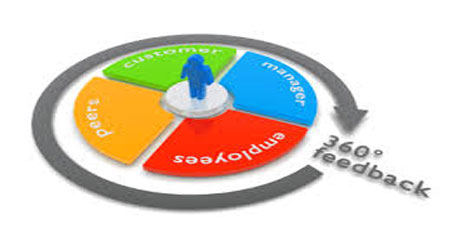Pros of 360 Degree Feedback
360 degree feedback has many positive aspects and many proponents. The 1999 State of the Industry Report, from the American Society for Training and Development (ASTD), reviewed the training practices of more than 750 firms. Fifty-five firms, described by ASTD as leading edge in their training approaches, rely heavily onemployee feedback, including360 degree feedbackand peer review, for individual development plans and annualperformance reviews. According to ASTD, 75 percent of these companies provided individual development plans, and 33 percentprovided 360 degree feedback for most of their employees in 1998, compared to 50percent and 10percentin 1997.

Organizations that are happy with the 360 degree component of theirperformance management systemsidentify these positive features of the process that manifest in a well-managed, well-integrated 360 degree feedback processes.
- Improved Feedback From More Sources:This method provides well-rounded feedback from peers, reporting staff, coworkers and supervisors and can be a definite improvement over feedback from a single individual. 360 feedback can also savemanagers’ time in that they can spend less energyproviding feedback as more people participate in the process. Coworker perception is important and the process helps people understand how other employees view their work.

- Team Development:This feedback approach helpsteam memberslearn to work more effectively together. (Teams know more about how team members are performing than their supervisor.) Multi-rater feedback makes team members more accountable to each other as they share the knowledge that they will provide input on each member’s performance. A well-planned process can improve communication and team development.

- Personal and Organizational Performance Development:360 degree feedback is one of the best methods for understanding personal and organizational developmental needs.
- Responsibility for Career Development:For many reasons, organizations are no longer responsible fordeveloping the careersof their employees, if they ever were. Multi-rater feedback can provide excellent information to an individual about what she needs to do to enhance her career.
- Additionally, manyemployeesfeel 360 degree feedback is more accurate, more reflective of their performance, and more validating than feedback from a supervisor alone. This makes the information more useful for both career and personal development.

- Reduced Discrimination Risk:When feedback comes from a number of individuals in various job functions, discrimination because of race, age or gender is reduced. The "horns and halo" effect, in which a supervisor rates performance based on her most recent interactions with the employee, is also minimized.
- Improved Customer Service:Each person receives valuable feedback about the quality of his product or services, especially in feedback processes that involve the internal or external customer. This feedback should enable the individual to improve the quality, reliability, promptness, and comprehensiveness of these products and services.

- Training Needs Assessment:360 degree feedback provides comprehensive information about organization training needs and thus allows planning for classes, cross-functional responsibilities and cross-training.
A 360 degree feedback system does have a good side. However, 360 degree feedback also has abad side - even an ugly side

